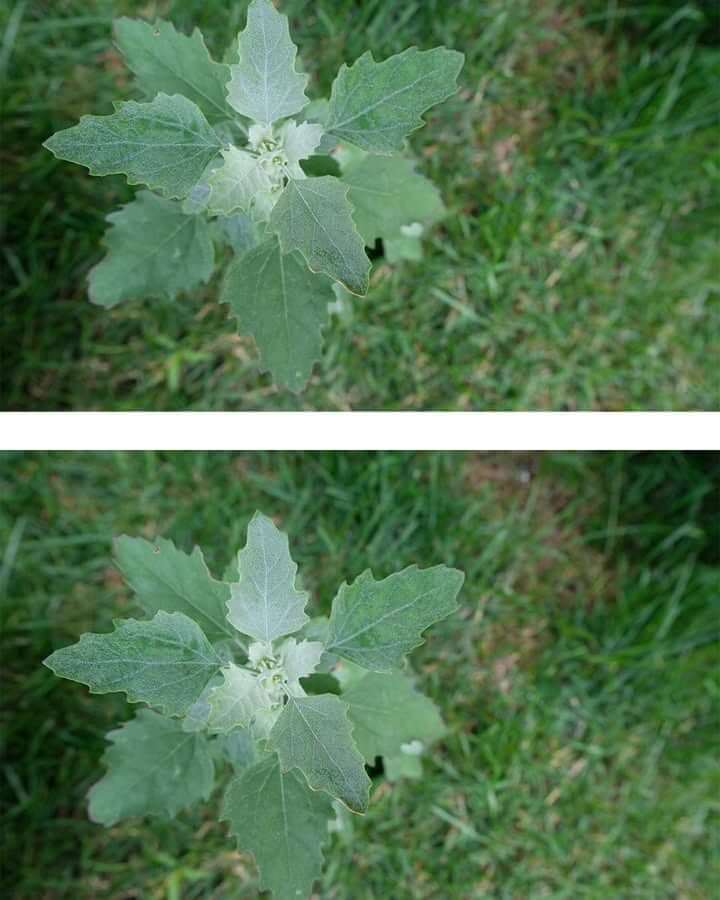Often mistaken for a simple weed, lamb’s quarters holds far more value than meets the eye. Scientifically known as Chenopodium album, this hardy plant thrives in gardens, fields, and alongside roads across many parts of the world. Though frequently disregarded, lamb’s quarters boasts an impressive nutrient profile and a long history of medicinal use. In this article, we reveal the lesser-known advantages of this humble plant—ranging from nutrition to health benefits and beyond.
Getting to Know Lamb’s Quarters: The Underrated Green
Lamb’s quarters belongs to the Amaranthaceae family, sharing a botanical connection with spinach and quinoa. Its distinctive diamond-shaped leaves are typically dusted with a white, powder-like coating, and it can grow as tall as 1.5 meters. Despite being widely available, many see it as just another invasive plant. However, its resilience and ease of growth make it a valuable addition to both diets and natural medicine practices.
Traditional Medicine and Historical Uses
For centuries, lamb’s quarters has played a role in traditional healing. Indigenous communities, especially Native American tribes, turned to this plant for treating digestive problems, skin irritations, and breathing issues. In India’s Ayurvedic tradition, lamb’s quarters—commonly called “bathua”—has long been used to balance internal energies and support digestive health. These traditional applications reflect the plant’s long-standing reputation as a holistic remedy.
Packed with Nutrients: A Natural Superfood
Nutritionally, lamb’s quarters stands out as a powerhouse. It delivers a generous dose of vital vitamins such as A and C, along with essential minerals like iron, calcium, and magnesium. The plant’s leaves also provide protein and dietary fiber, making them a smart addition to a balanced diet. On top of that, lamb’s quarters are rich in antioxidants, which help the body manage oxidative stress and support long-term wellness. In many ways, this wild green rivals and even surpasses commonly consumed leafy vegetables.
Healing Properties: What the Science Suggests
Thanks to its dense nutrient content and active compounds, lamb’s quarters offers several health-promoting effects. It is thought to possess antioxidant, antimicrobial, and anti-inflammatory properties. Regular consumption may aid digestion, improve immune function, and support strong bones due to its calcium content. Its iron levels make it beneficial for preventing iron-deficiency anemia, while its antioxidants may lower the risk of chronic illness. Clearly, this plant has a lot to offer when it comes to natural wellness.
Where to Find It and How to Harvest Safely
You’ll typically spot lamb’s quarters growing in disturbed soils—like backyards, farm fields, and unmaintained lots. To identify it, look for leaves shaped like triangles or diamonds, often coated with a fine white powder. For best results, harvest the plant in spring or early summer when the leaves are most tender. Be sure to avoid areas exposed to pesticides, vehicle fumes, or industrial pollutants. Always gather from clean, natural areas to ensure safety.
Cooking with Lamb’s Quarters: Delicious and Nutritious
Lamb’s quarters is as versatile in the kitchen as it is beneficial for your health. Young, tender leaves can be tossed into salads or blended into smoothies, while more mature leaves are best when cooked. Cooking helps reduce oxalic acid, a natural compound that can affect mineral absorption. You can steam, sauté, or simmer the leaves in soups and stews. With its subtle nutty flavor, lamb’s quarters adds a delicious and nutritious touch to a variety of meals.
What to Watch Out For: Safety Tips and Precautions
Though generally safe, lamb’s quarters does contain oxalic acid, which may interfere with calcium absorption and potentially lead to kidney stones in susceptible individuals. Cooking significantly reduces this risk. Like with any foraged food, proper identification is essential to avoid confusing it with toxic look-alikes. Also, anyone trying lamb’s quarters for the first time should start slowly to rule out potential allergies or sensitivities.
Conclusion: Unlocking the Benefits of a Misunderstood Plant
Lamb’s quarters may grow in overlooked places, but it offers extraordinary value as both food and medicine. With its exceptional nutrient profile, historic uses, and healing potential, this plant deserves more recognition. By incorporating lamb’s quarters into your diet or natural health routine, you can take advantage of a time-tested resource that generations before us have trusted. It’s time to stop pulling it out of the garden—and start putting it on your plate.
